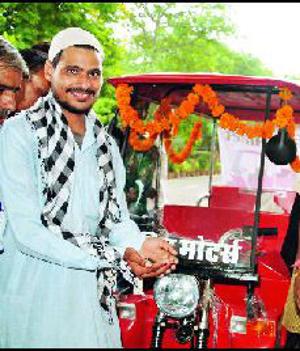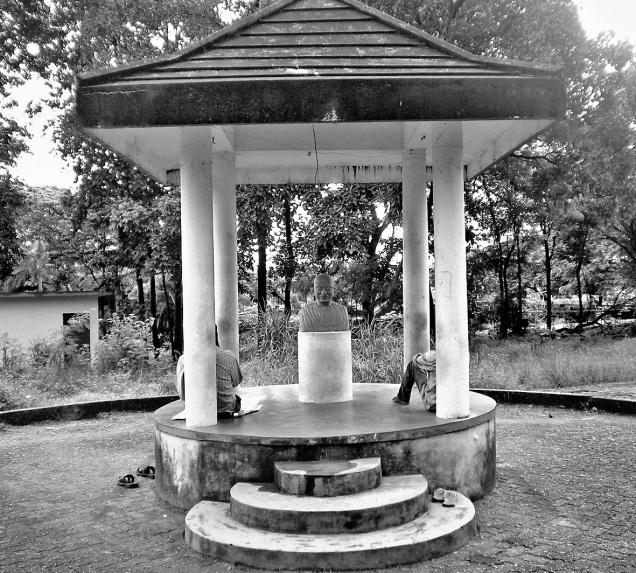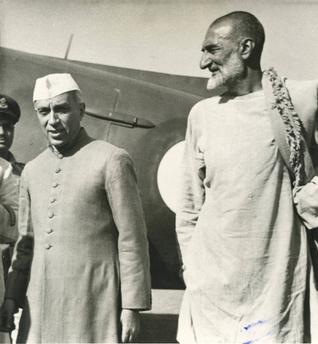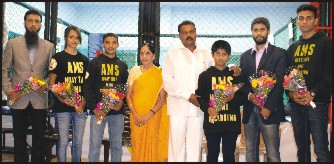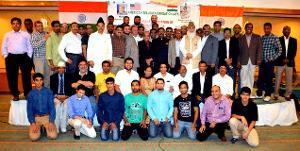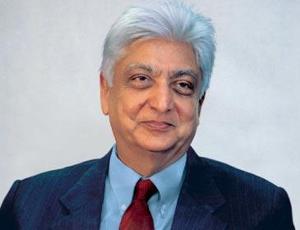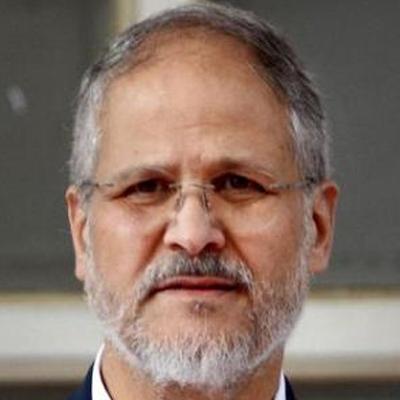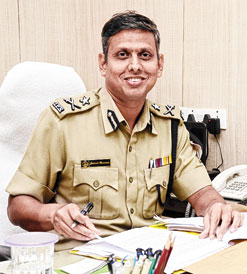
Jawed Shamim, commissioner of police, Bidhannagar, answers 10 questions asked by the residents of Salt Lake through The Telegraph Salt Lake.
When you took over as commissioner, what was your message to your force? And in your stint as commissioner, what have been the three biggest challenges faced by you and your team, and what has been your plan of action to face these challenges?
The message was simple: Together we shall and we will provide an effective police force for the residents of this Commissionerate.
Each and every sphere of policing is equally challenging and maintenance of law and order and prevention of crime are the biggest challenges for any city policing force. However, in the short term, the following three targets were identified.
Revamping the traffic system with special emphasis on traffic engineering and infusion of technology in traffic management. More visibility and better enforcement of traffic rules including removal of the auto and bus stands from various important crossings. It has already been implemented at Karunamoyee crossing and we will implement it in other parts of this Commissionerate.
Rein in illegal activities of the various dance bars and restaurants and immoral activities in various parts of this Commissionerate, especially in Baguiati, New Town & Airport areas.
Devising a mechanism to prevent house burglary and theft in the Salt Lake area through human intelligence patrolling and use of technologies, and involving the community in these efforts.
Does the Commissionerate have adequate manpower and what area does it cover?
Manpower is more than what it was before this Commissionerate was formed. However, it has to be increased further and the same is under the active consideration of the government. Bidhannagar Police Commissionerate has got an area of approximately 150sq km covered by 10 police stations.
The area of Bidhannagar Police Commissionerate has seen changes both in its demographical as well as topographical aspects. It has become the IT hub of Bengal. Many government and corporate houses have made this their home. New townships and recreation centres have sprung up. These have necessitated a more intensive and direct policing system. Policing has become much more professional, inculcating all the values needed to serve the people in these ever-changing times.
Does the police plan to install CCTVs at major crossings? A few block residents’ associations have installed CCTVs, but after a theft last year in one, it was found that the cameras were placed too high to capture faces. What is your advice for such private initiatives?
Yes, this Commissionerate will gradually be covered with CCTV cameras. As of now, we have already installed CCTV connections at 29 places in Salt Lake area, monitored centrally at Bidhannagar control room. There is a proposal for increasing the CCTV surveillance in the Smart City project. Red Light and Stop Line violation camera is being installed at one crossing on VIP Road, which will gradually be increased at other crossings of the Commissionerate.
Many CCTVs have been installed by private units. We have also sent request letters to the business establishments and housing societies to install CCTV cameras. Nowadays, CCTV camera comes at a very reasonable rate and individual houses can also afford to install these. This will go a long way in detection and thereby prevention of crime, especially property crimes. Those who are installing CCTV cameras at their own initiative are requested to contact the local police station so that they can get proper guidance regarding the correct installation points.
What steps would the police take to free the northern side of the Eastern Drainage Canal of squatters? While the other side of the bank is being beautified as the approach to Sector V, shacks have come up in rapid succession on this side over the last year and half.
We are aware about the problems of the squatters and have already taken up the matter with Bidhannagar Municipality.
Salt Lake, as the common saying goes, is like one big old-age home. What steps are the police taking to ensure the safety of elderly residents of the township who stay alone?
We are acutely aware that the services to the elderly residents of Salt Lake is one of the prime responsibilities of Bidhannagar Police Commiss-ionerate and it extends beyond normal policing. To cater to the various requirements, we have associated with the NGO called OFFER in the project Sanj Baati which exclusively looks after the problems of elderly residents of the Salt Lake area. Sanj Baati has its office in the Bidhannagar North P.S. compound. To provide ambulance and other medical facilities is also a prime area that we are working on. All police stations have been asked to get a list of the elderly people staying in their respective jurisdiction and to keep in touch with them as far as possible. Those working on 100 dial are also sensitised to attend the calls of elderly people efficiently and promptly.
Are all crimes related to cyber crime to be reported to the cyber crime police station only? Can we lodge such complaints in the other police stations as well?
This being the IT hub, increasing cyber crime has been a natural corollary. Keeping this in mind, Cyber PS has been set up to cater to the crimes arising out of the cyber world. However, it is not mandatory that cyber crime has to be reported only to the Cyber PS. All police stations are authorised to register cyber cases. If need be, they can take the expert help of Cyber PS.
What can a citizen do if a police station refuses to lodge an FIR and pressures the complainant to turn it into a general diary?
On no account should the citizens under the Bidhannagar Commissi-onerate accept the refusal to lodge an FIR. Clear instructions have been given to police stations for registration of all cognisable cases. In spite of that, if there is any reluctance on the part of the police station to register any case, the matter has to be promptly brought to the notice of the concerned Zonal ACPs / ADCPs / DCPs and my office.
There is now a separate section on your website for registration of landlords, tenants, PGs and domestic helps. How has the response been?
There has been steady response to the online registration on our website. Around 30,000 registrations have already taken place but we will urge citizens of the Salt Lake area to use this facility and register themselves in greater numbers.
One complaint from residents of Sectors 1 and 2 is how thieves escape by crossing the footbridges across Kestopur canal and reaching VIP Road. Do you have plans to guard those at night? Also can the patrol cars do a few rounds in the post-lunch hours when some of the petty thefts take place?
Regular vigil at different footbridges connecting stretches of Salt Lake with Lake Town-VIP connector etc is maintained. Police personnel are posted for night duty at the connecting points of footbridges at Salt Lake side. However, more effective methods of patrolling including foot, bicycle and motorcycle patrol are being introduced within the constraints of the available manpower and resources.
What are your goals for the next few years?
The goals for the near future is to build up a dynamic force…
capable of quick response to tackle a law & order situation.
proficient in prevention and detection of crime.
adept in ensuring smooth traffic management.
involved in various community policing projects.
What would you like to ask the police commissioner?
Write to saltlake@abpmail.com
source: http://www.telegraphindia.com / The Telegraph, Calcutta,India / Front Page> Salt Lake> Story / Friday – August 14th, 2015
